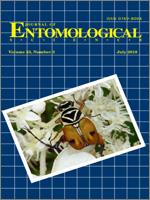
Insecticidal Control for the Rice Stink Bug (Hemiptera: Pentatomidae) Complex Found in Florida Rice1
No abstract available
No abstract available
No abstract available
